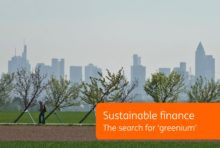
Bron
ING
Engaging in green finance takes extra effort, but there are clear benefits. In a new report by ING, the bank looks at the practicalities and pitfalls of issuing green bonds, the corporate premium in green finance, the greenery in the sovereign and SSA space along with the ‘greenium’, the search for a decent premium in sustainable finance.
Being green: It’s not all about the money
Engaging in green finance requires extra effort, in particular for issuers; far more hoops to jump through relative to vanilla issuance. But there are clear benefits, and it’s not just about lower funding costs. It’s more about the messaging. Extra hours go in, but what comes out leaves a lasting impression, mostly a good one. We have some survey evidence.
The corporate premium in green finance
There is a cost saving to issuing Green. It varies according to circumstances, but the baseline assumption now is for green yields to be below vanilla ones; not by much, but it’s persistent enough. It’s between 1 basis point to 10bp, with EURs drifting lower while the USD version is a tad more elevated. It reflects ESG scarcity, but also longevity.
The greenery in sovereign and SSA space
The funding advantage of green bonds is also a reality in the official sector, although discrepancies among issuers do exist. Due to their more prolific borrowing and abundance of green bonds, sovereign and SSAs offer our best opportunity to accurately measure this greenium. They also have a responsibility in ‘leading the way’ for private borrowers.
So what is a greenium and how do we get to it?
The existence of a greenium is mostly justified by higher demand for green bonds. We estimate the greenium for each curve separately, ensuring it is not polluted by other factors such as sector or maturity.



